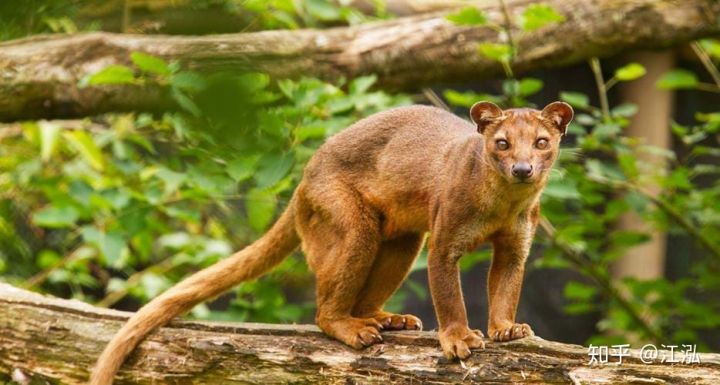Madagascar, often referred to as the “eighth continent,” is a land of bewildering biodiversity and natural wonders. Nestled in the Indian Ocean, this isolated island nation has evolved its own unique ecosystems, home to a remarkable array of species found nowhere else on Earth. Among its many enigmatic inhabitants, one stands out as both mysterious and menacing – the fossa.

The Enigma of Madagascar
Madagascar’s long isolation from the African mainland has led to the evolution of a variety of unusual and extraordinary species. The island is famous for its charismatic lemurs, colorful chameleons, and bizarre baobab trees. But lurking in the shadows of this biological paradise is a predator that embodies both the mystery and danger of Madagascar’s wilderness – the fossa (Cryptoprocta ferox).

A Master of Adaptation
The fossa is the largest carnivorous mammal on the island and is often described as a bizarre blend of a cat and a mongoose. With a lithe body, sharp claws, and keen hunting instincts, this species is a formidable predator. Its slender form allows it to move stealthily through the dense foliage of Madagascar’s rainforests and dry forests, making it an elusive and efficient hunter.
The Fossa’s Deadly Pursuit
One of the fossa’s most remarkable traits is its ability to hunt a variety of prey, adapting its tactics to catch lemurs, birds, reptiles, and even small mammals. It can climb trees with ease, using its retractable claws to grasp branches and ambush its prey from above. Its sharp teeth and powerful jaws make short work of its victims, earning it the nickname “Madagascar’s top predator.”
The Fossa’s Enigmatic Behavior

While the fossa is a top predator, much of its life remains shrouded in mystery. It is primarily solitary and rarely seen in the wild, making it challenging for researchers to study its behavior. Some aspects of its reproduction, social structure, and overall ecology still puzzle scientists.
Conservation Challenges
The fossa, like many other species on Madagascar, faces numerous threats to its survival. Habitat loss due to deforestation, human encroachment, and illegal hunting pose significant challenges. Conservation efforts are underway to protect this unique predator and its habitat, but the ongoing struggle to balance human needs with biodiversity preservation is a complex issue.
A Symbol of Madagascar’s Unique Ecosystem

The fossa serves as a symbol of Madagascar’s remarkable and fragile ecosystems. Its presence underscores the importance of preserving the island’s biodiversity and conserving the habitats that support both iconic and lesser-known species. The mystery and danger associated with the fossa remind us of the need to protect the Earth’s last remaining wild places.
In Madagascar’s mysterious and enigmatic land, the fossa reigns as a top predator, embodying the unique nature of this island’s wildlife. As we continue to explore and understand this captivating creature, we are reminded of the urgent need to conserve and protect Madagascar’s unparalleled biodiversity for future generations.